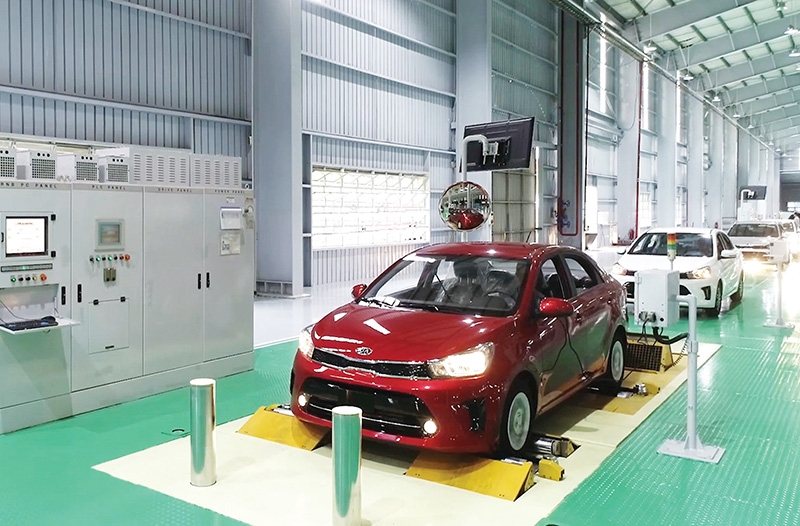How the pandemic hinders automobile supply chains
 |
| By Lam Le - Head of Tax and Consulting Services Partner, RSM Vietnam |
However, the worldwide spread of COVID-19 has become one of the greatest tests to the complex global supply chains created by auto manufacturers over the past 30 years and could lead to another downturn in global sales. On the other hand, the situation has been seen as the perfect storm for the global supply chain to take notice of Vietnam in a much stronger fashion.
The auto industry is feeling the effects of the coronavirus outbreak well beyond China’s borders as shortages of supplies from China stall production around the world. While the country is not a significant exporter of fully-assembled vehicles, it has become a major player in the worldwide auto parts and component network. In 2018, China exported almost $35 billion worth of parts and accessories, with the United States importing almost $12 billion.
Difficulties in the Chinese auto market causes concern for plenty of analysts due to the fact that major brands like Volkswagen or GM sell millions of cars each year in this country, with sales accounting for 40 per cent of total global sales. Meanwhile, many parts of a car are also produced in this most populous country in the world.
Nissan recently announced it would suspend production in Japan due to the outbreak. Hyundai, which is highly dependent on Chinese suppliers, idled three of its plants in South Korea in February due to parts shortages. In mid-March, every major carmaker in the United Kingdom and Europe suspended or cut production as the disruption from the pandemic continued to spread, with only lower-volume manufacturers such as Aston Martin keeping factories open.
Worldwide effects
The Vietnamese automotive industry’s resilience is unsure, and depends on the pandemic situation. If it progresses in a complicated manner and the supply chain continues to be considerably affected, certain auto assemblers will also be forced to partially suspend production and the number of other business plans will be delayed indefinitely.
As automakers work to reopen factories and parts plants resume operations, many suppliers have no choice but to turn to costly airfreight, rather than ships, to get parts to their customers quickly. Supply chain issues may force more businesses to send workers home or reduce production in the near-term. As the coronavirus takes its toll on Italy, the world’s eighth-largest economy, Lamborghini announced the closing of its factory in Sant’Agata Bolognese. Because this facility is responsible for the production of all the brand’s models, this effectively means no new Lamborghini production. In addition, Fiat Chrysler has temporarily closed four plants in Italy.
Automotive companies around the world are increasing space between employees at their workstations. This will affect and require changes to the manufacturing process, and when production resumes may lead to lower daily production rates. These changes, plus enabling employees to work from home, will bring major challenges for companies to meet production demands globally.
The automotive supply chain in Europe is highly integrated, with supply chains that cross multiple countries. Germany is the global headquarters to Volkswagen, BMW, and Daimler. Renault and Peugeot, which is merging with Fiat Chrysler, are based in France. As France and Germany continue to evaluate the pandemic, and provide directives and restrictions to contain the coronavirus, car manufacturers will continue to feel the impact and pressure in their supply chains.
Meanwhile, there may be a surge in growth in market as manufacturers resume operations, but it will take time to get back to normal production levels. The coronavirus outbreak will surely accelerate industry consolidation and transformation, with organisations focusing on greater resiliency, innovation, and investment in emerging growth markets. Significant disruption inevitably causes companies to respond with a campaign to diversify their suppliers, leading to higher costs in the short-term.
Those higher costs typically ease as the memory of the disruption fades, but this time may be different; manufacturers were already shifting global supply chains away from China in response to tariffs, and this pandemic could be just the event that leads to more regionally focused supply chains. Such a reversal would mark a departure from the three-decade-plus trend of moving manufacturing to China. In this context, Vietnam could benefit in attracting investors due to its ability to control the pandemic and the resilience of the economy.
However, moving to Vietnam is not without challenges. In the short term, manufacturers may find it difficult to move production when their supply chains have to rearrange. Companies are often in a dilemma when it comes to deciding where to relocate, how to enter the Vietnamese market, and where they will establish operations in the country. Those who understand these issues will have an impact on their competition – they will be able to make more informed decisions to keep their operations stable in the short and medium term and expand if required.
 |
| Supply chain complications have forced businesses to reduce car production and send workers home Photo: Le Toan |
Necessary focus
Three factors need to be taken into account in order to prepare and adapt to changes in the short term, and the first is supply chain stabilisation. The coronavirus has highlighted a number of risks and exposures throughout the entire supply chain. Hence, the process of moving products from supply through production and eventually distribution presents complex decisions.
We recommend modeling supply chain alternatives with smart algorithms and other tools to determine the best options to provide short-term stability and a platform for long-term success. Companies are looking to stabilise supply chains in an effort to prepare for a restart and economic recovery, whenever that occurs.
The second factor is maximising liquidity. The automotive industry is very capital intensive, requiring significant annual investments in research and development. While companies typically focus on profitability metrics, we recommend that right now companies shift their focus to enhancing liquidity opportunities. Cash conversion cycles and inefficient uses of internal cash-working capital maximisation (payables, receivables, and inventory) should be a secondary focus area.
In general, it takes more than the CEO or CFO to identify and take advantage of liquidity opportunities. Organisational behaviour will need collaborative awareness and a coordinated plan for execution and the identification of key performance metrics for measuring liquidity maximisation. Companies need to evaluate existing lines of credit for market terms and assess alternative liquidity sources that may be available to source and fund working capital needs.
Finally, businesses must stay focused on their customers. They must focus on customer supply chain needs during these volatile times. Customer centricity is the quality of an organisation that places the customer at its core. This standard moving forward will obviously have huge effects on supply chain design, in order to meet increasingly complex customer requirements.
Bringing stability to your supply chain, maximising liquidity, and focusing on the customer is critical in the short-term to maximise overall financial results. However, the industry’s recovery after the current pandemic will require an even deeper commitment to innovation and a drive to invest in emerging growth markets in order to maintain today’s fast-moving environment.
What the stars mean:
★ Poor ★ ★ Promising ★★★ Good ★★★★ Very good ★★★★★ Exceptional
Related Contents
Latest News
More News
- Implementation of the circular economy in Vietnam (November 13, 2023 | 11:30)
- Banking’s development in data and digitalisation era (November 07, 2023 | 15:24)
- ESG enabling real estate businesses to attain funds (June 16, 2023 | 15:25)
- RSM Vietnam stays ahead of the changing business environment (March 14, 2023 | 10:07)
- What might the Vietnamese economy look like in 2023? (January 02, 2023 | 21:37)
- Neobanking: a trend-setting model for the digital revolution (December 19, 2022 | 14:30)
- Evaluating the prospects of M&A upswings next year (November 28, 2022 | 08:00)
- RSM Vietnam celebrates opening new office in Ho Chi Minh City (September 20, 2022 | 19:29)
- RSM Vietnam taking advantage of central region recovery to expand operations (September 19, 2022 | 08:00)
- Firm grasp of rules crucial in handling customer info (August 29, 2022 | 08:00)

 Tag:
Tag:





















 Mobile Version
Mobile Version